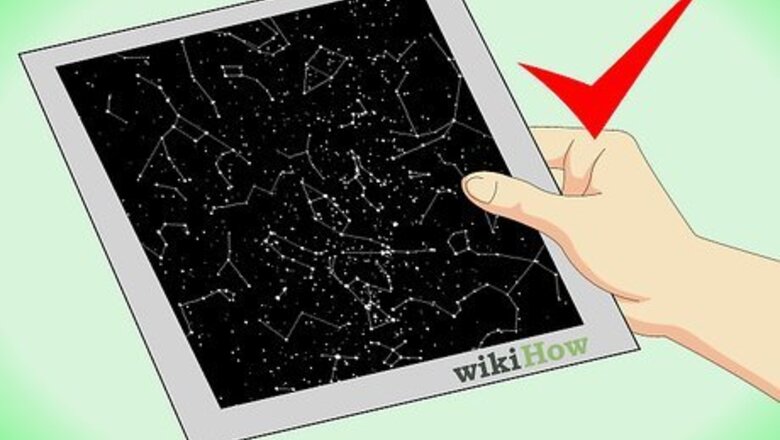
views
Getting Equipped
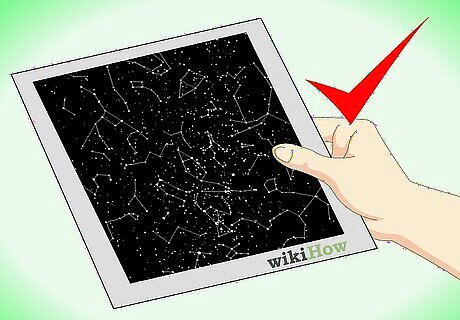
Get a sky map. Before you start looking for Jupiter, you should get hold of a sky map which can show you where in the sky to start looking. For more advanced astronomers, there are numerous sophisticated maps of the sky which show the position and trajectory of the planets. For those inexperienced in reading these paper maps there are a number of smart phone apps which you can download which will help you to find Jupiter and the other planets and stars in the sky. With some smartphone apps all that you have to do is hold the phone up to the sky and it will identify the stars and planets for you.
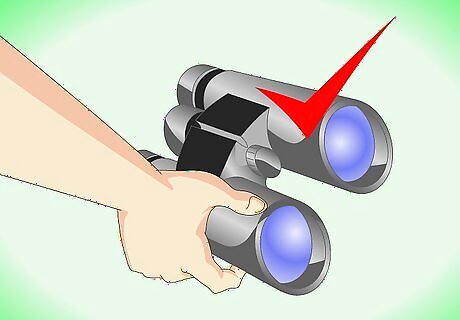
Ready some binoculars. Jupiter is so massive and bright in the sky that it can be viewed with a good pair of binoculars. Binoculars that magnify seven times human eyesight will be effective and will reveal Jupiter as a small white disk in the sky. If you don’t know what strength your binoculars are look at numbers on the side, if it says 7x another number then they magnify seven times and will enable to observe Jupiter.
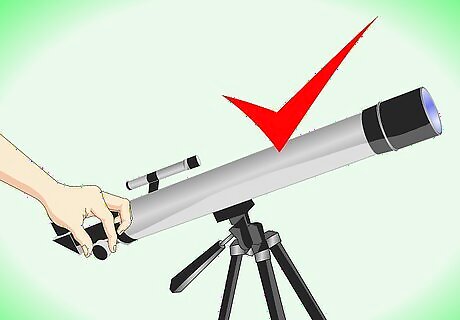
Get a telescope. To really get a good view of the Jupiter’s spectacular features, your observations will be improved with even an entry-level telescope. This equipment will help you to see Jupiter’s famous belts, all four of its moons, and potentially even the Great Red Spot. The range of telescopes available is huge, but for beginners a 60 or 70mm refractor telescope is a good place to start. The performance of your telescope will drop if the optics are not sufficiently cooled. Keep it in a relatively cool place, and before you want to start viewing place it outside so its temperature can drop before you begin.
Preparing for your Observation

Get to know good seeing conditions. You can save time and avoid fruitless hours by learning to identify good viewing conditions quickly. Before setting up the telescope take a look at the stars. Ask yourself if the stars are twinkling brightly through the sky. If so, this suggests that there is a turbulent atmosphere. Such conditions make planet observation more difficult, instead you want calm night-sky. In a steady night with good seeing conditions, the sky might appear somewhat hazy. The Association of Lunar and Planetary Observers (ALPO) has a scale for seeing conditions which goes from 0 to 10. If the conditions score lower than a 5, your chances of a good observation are very slim.
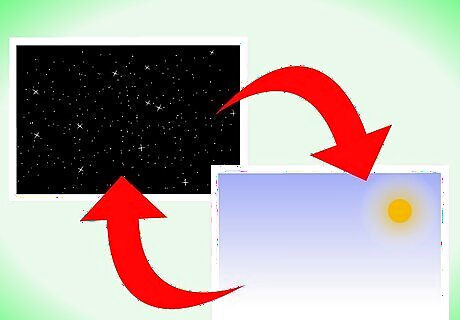
Find the right time of the day or night. The best time to observe planets is at night, but Jupiter is so bright that it can sometimes be seen shortly after dusk, and shortly before dawn. At dusk it will rise in the east, but as night goes on Jupiter will appear to travel westwards through the sky. At mid-northern latitudes it will set in the west a little before the sun rises in the east each morning.
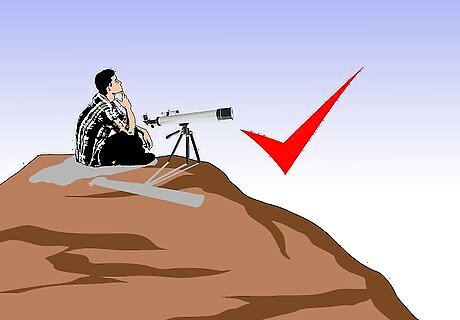
Pick your spot and be ready to wait. Be sure to set yourself up in a good place where it is dark and quiet so you can concentrate on your planet gazing. Your backyard is perfect, but remember that observing planets can be a slow and engrossing business, so be sure to wrap up warm and be prepared for a lengthy wait. If you are planning on documenting your observation have any materials with you so you don’t have to leave your observation post.
Observing Jupiter
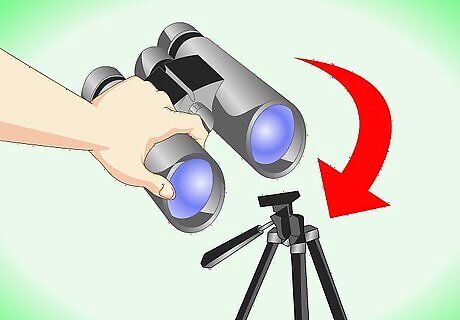
Find Jupiter with binoculars. Find a comfortable and steady position and if possible mount your binoculars on a camera tripod, or something else steady and fixed so they won’t shake as you use them. With the binoculars you should be able to see Jupiter as a white disk. You may also be able to see up to four distinct specs of light near Jupiter, these are its four Galilean moons. Jupiter has at least 63 moons in orbit. In 1610, Galileo named the four main moons Io, Europa, Ganymede, and Callisto. How many you can see will depend on their position orbiting Jupiter. Even if you have a telescope, it can be helpful to use binoculars to spot Jupiter in the sky before moving on to the telescope for a more detailed observation.
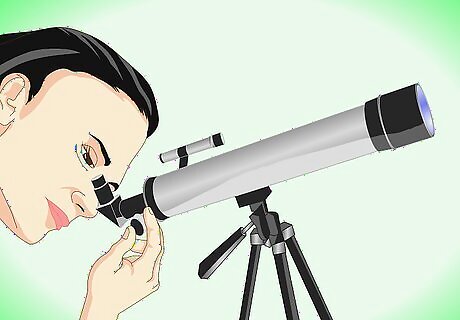
Take a closer look with a telescope. Once you have spotted Jupiter, you can begin a more detailed observation of the planet’s surface through your telescope and identify some of its key features. Jupiter is famous for its darker cloud belts and lighter zones which are appear laterally across the planet’s surface. Try to identify the central light area known as the equatorial zone and the darker equatorial belts north and south of it. When searching for the belts, keep trying. It takes time to learn how to spot the belts through a telescope. It's a good idea to try this with someone who is already familiar with spotting them.
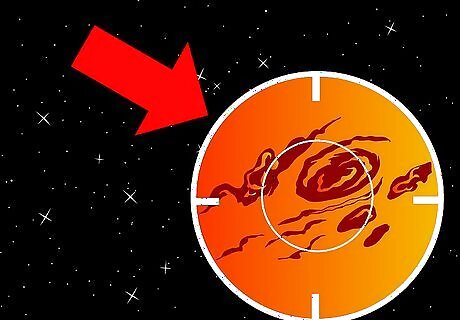
Find the Great Red Spot. One of Jupiter’s most fascinating features is its Great Red Spot. This giant oval storm, larger than Earth, has been observed on Jupiter for more than 300 years. You can locate it at the outer edge of the south equatorial belt. The spot shows clearly how fast surface of the planet is changing; within the space of only an hour, you should be able to see the spot clearly move across the planet. The intensity of the Great Red Spot varies, and it can’t always be seen. It isn’t really that red, but more of orange or a pale pink colour.
Documenting your Observations
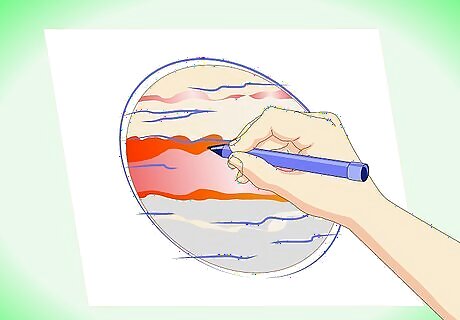
Try to sketch what you see. Once you have a good view of Jupiter you can document your astronomical observations by drawing Jupiter and recording its appearance. This is essentially a less high-tech version of what astronomy is all about, observing, documenting and analysing what you see in the sky. Jupiter is ever-changing so try to sketch it in around twenty minutes. You’ll be following in a great tradition of astronomical drawing.
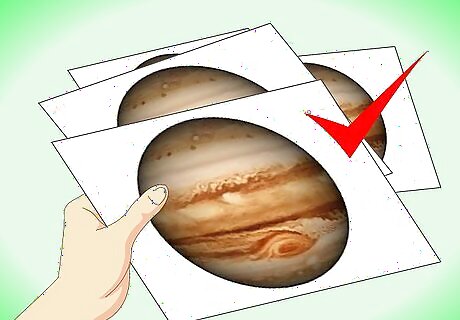
Do some Jupiter Photography. If you prefer a more technologically advanced method of recording your observations you could try photographing Jupiter. Much like telescopes, the camera you use can be very powerful or more basic and still get results. Some star-gazers use charged coupled device cameras or even cheap and lightweight webcams for photographing planets with telescopes. If you want to try using a DSLR camera, remember longer exposures will capture the moons more clearly but will wash out the dark and light bands across the planet surface.
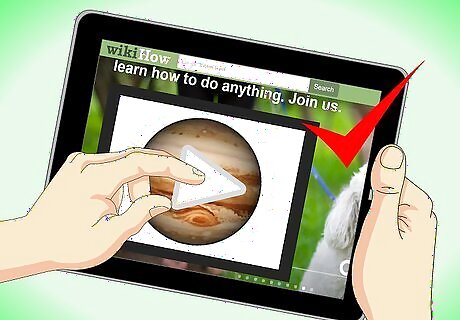
Make a Jupiter Movie. One great way to track the constant change on the surface of Jupiter and the position of its moons is to film it. You can do this in much the same way as you would photograph it. Use your notes to compare different observations to keep track of changes on the surface of the planet and to find things of interest. The clouds are turbulent and the planet's appearance can change dramatically in just a few days.




















Comments
0 comment